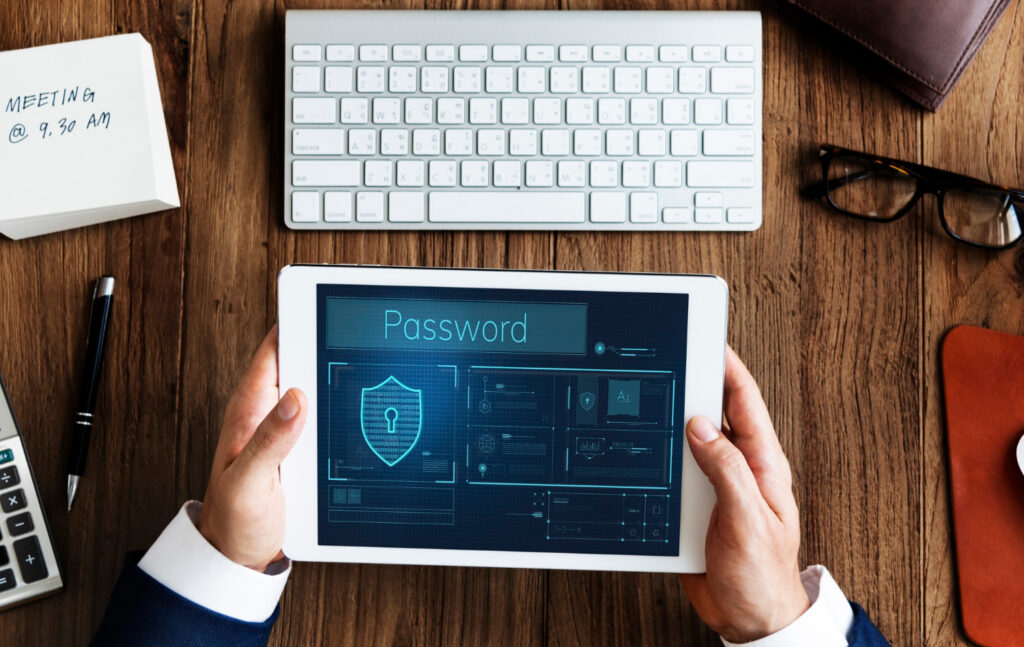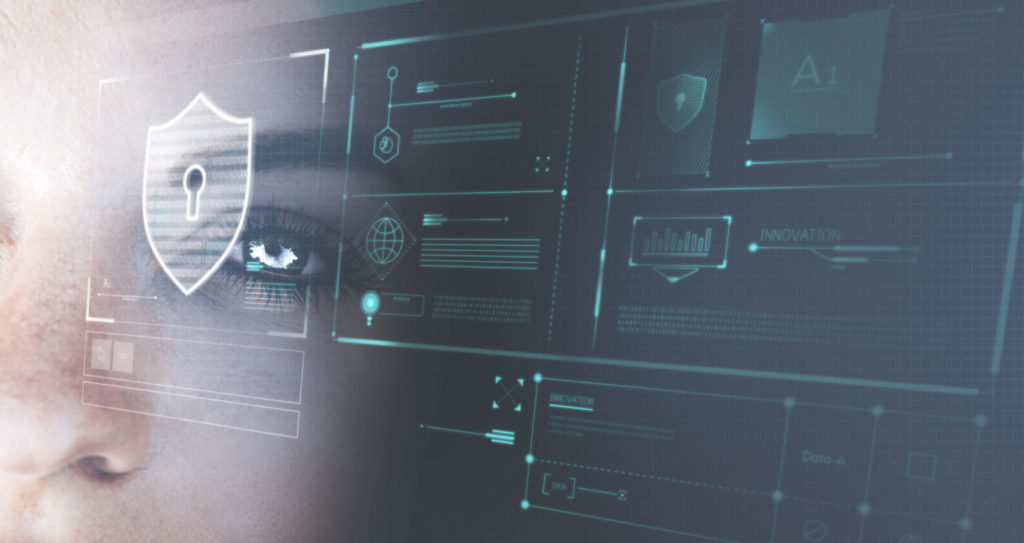M+E Connections

M&E Journal: Creating Secure Content In an Evolving Landscape
Story Highlights
Amidst a dynamic and ever-changing landscape, the media and entertainment industry is experiencing significant transformation.
This shift is primarily driven by the profound impact of digital technologies, which have not only redefined but also completely revolutionized content production, distribution, and consumption.
These extensive changes are reshaping how the industry functions and placing a renewed focus on the crucial areas of cybersecurity and content protection.
As the M&E industry undergoes a fundamental change in how content is created, delivered, and consumed, it becomes essential to assess the tools and strategies in use to safeguard the industry’s core.
 CONTENT PROTECTION: SECURING DIGITAL ASSETS
CONTENT PROTECTION: SECURING DIGITAL ASSETS
Protecting creative assets, intellectual property, and confidential pre-release content in the entertainment industry is challenging in the digital age.
Why?
Because digital piracy is constantly evolving.
What can be done?
Enterprises can invest in cutting-edge technologies like AI and blockchain. These technologies can help to monitor and defend against anomalies in real time, reinforcing the industry’s commitment to safeguarding creative assets.
Blockchain, DRM, and AI form a robust trio in con- tent protection for the M&E industry as they enhance security and control over digital assets.
Enhancements in digital rights management (DRM) solutions grant content creators and distributors better control over content access and distribution, safeguarding their intellectual property. While progress has been made, there is still room for improvement in vital areas.
Continued investment in cutting-edge technologies is essential to protect content in the ever-evolving con- tent distribution landscape.
Blockchain plays a central role in DRM by creating an immutable ledger of content ownership and rights. It transparently records content creation and rights assignments, reducing ownership disputes. Smart con- tracts, powered by blockchain, automate DRM rules for efficient content access and sharing control, reducing violations.
This decentralized approach minimizes vulnerabilities associated with centralized DRM systems.
AI strengthens content protection by enabling advanced threat detection, piracy pattern recognition, and predictive analysis to anticipate future vulnerabilities. AI also monitors user behavior for insider threats and enhances user authentication with multi-factor verification and biometrics.
This blend offers a comprehensive approach to content protection. It safeguards intellectual property rights, reduces piracy risks, and reinforces cybersecurity, ensuring a thriving future for content creators, distributors, and consumers alike.
Collaborative efforts among stakeholders are crucial for a stronger ecosystem against piracy. Securing the en- tire content creation and distribution chain, including third-party vendors, is essential. Reinforcing cybersecurity is vital. User education, awareness, and training programs are imperative.
Regulatory compliance is essential to safeguard content and mitigate legal issues in the dynamic digital landscape.
EMBRACING THE AGE OF OTT AND STREAMING: TRANSFORMATION IN THE M&E INDUSTRY
Across the world, over 3.5 billion people use video OTT services. That’s a little less than half of the world’s population. This OTT evolution revolutionizes content delivery, consumption, and industry dynamics.
The convenience of accessing content on streaming platforms has heightened piracy risks, enabling the effortless cap- ture and distribution of content, while the global reach of these platforms complicates the enforcement of copyright and content protection across multiple jurisdictions.
 Efforts to combat piracy should be fortified through the deployment of advanced technology to detect and counter illegal content distribution, coupled with global cooperation involving governments and law enforcement agencies to effectively address cross-border piracy.
Efforts to combat piracy should be fortified through the deployment of advanced technology to detect and counter illegal content distribution, coupled with global cooperation involving governments and law enforcement agencies to effectively address cross-border piracy.
Investments in secure streaming technologies create formidable barriers that make it increasingly challenging for pirates to capture and redistribute content.
Alongside these technical measures, raising awareness among consumers about the detrimental effects of piracy on the industry and the creative community is an essential component in the battle against this pervasive issue.
CYBERSECURITY IN THE M&E INDUSTRY
Cybersecurity plays a vital role in protecting content in the M&E industry. The evolution of technology introduces new threats and vulnerabilities, necessitating constant vigilance and adaptation.
Improving cybersecurity in the M&E industry involves several key strategies:
# Advanced threat detection: Utilize AI and machine learning for advanced threat detection, identifying patterns and anomalies in network traffic and user behavior.
# Cloud security: Secure cloud-based storage and distribution platforms with strong encryption, access controls, and continuous monitoring.
# End-to-end encryption: Implement end-to-end encryption to protect content throughout its journey, from creation to consumption.
# Regular security audits: Conduct regular security audits to identify vulnerabilities and address them promptly.
# Incident response planning: Develop comprehensive incident response plans to minimize the impact of security breaches and ensure an effective response.
# Zero-trust architecture: Implement a zero-trust security model, where trust is never assumed, and every device and each user is thoroughly authenticated before gaining access to resources.
In navigating the dynamic cybersecurity landscape, a culture of continuous adaptation is vital.
Collaborative efforts with experts, technology providers, and government agencies are critical for sharing threat intelligence. Investment in cutting-edge cybersecurity technology is vital for proactive defense. User education plays a pivotal role, as informed users and employees are the first line of defense.
Compliance with data protection regulations is essential, avoiding legal consequences and reinforcing cybersecurity practices.
Together, these strategies enhance the industry’s proactive cybersecurity stance.
THE SIGNIFICANCE OF AI IN COMBATING PIRACY AND ENHANCING CYBERSECURITY
The rapid growth of online content distribution and consumption has ushered in a new era of convenience and accessibility, but it has also opened the floodgates to rampant piracy and cybersecurity threats.
 The M&E industry is increasingly relying on AI as a powerful weapon in its arsenal to counter these challenges. AI’s ability to detect piracy, protect digital assets, and fortify cybersecurity measures has become a cornerstone in safeguarding creative content and intellectual property.
The M&E industry is increasingly relying on AI as a powerful weapon in its arsenal to counter these challenges. AI’s ability to detect piracy, protect digital assets, and fortify cybersecurity measures has become a cornerstone in safeguarding creative content and intellectual property.
# Content and pattern recognition: AI plays a crucial role in con- tent protection by analyzing and recognizing copyrighted content, facilitating the detection and prevention of unauthorized distribution. Additionally, AI algorithms are proficient in identifying piracy patterns like watermark removal or screen capture, allowing for swift and decisive actions against infringement.
# Automated takedown: AI-driven systems can efficiently and automatically issue takedown notices to infringing platforms, significantly reducing response time, and improving content protection.
# Predictive behavior analysis: AI offers two significant capabilities in cybersecurity. Firstly, it monitors user behavior to detect anomalies, aiding in the identification of potential pirates and insider threats. Secondly, AI employs predictive analysis, utilizing historical data and emerging trends to anticipate future cybersecurity threats and vulnerabilities.
# Threat and anomaly detection: AI, specifically machine learning, excels at swift threat detection in cybersecurity. It analyzes massive real-time data volumes, enabling quicker responses compared to traditional methods. Machine learning models excel at identifying abnormal patterns and behaviors across networks and systems, serving as an early warning system for potential security breaches.
In conclusion, the state of cybersecurity and content protection in the M&E industry is at a critical juncture.
 While progress has been made, new challenges brought about by streaming-first distribution and rapidly evolving technology demand continuous vigilance and innovation.
While progress has been made, new challenges brought about by streaming-first distribution and rapidly evolving technology demand continuous vigilance and innovation.
The industry must embrace integration of blockchain, DRM, and AI, and other cutting-edge technologies to bolster its anti-piracy and cybersecurity efforts.
Collaboration, education, and a proactive approach are essential in safeguarding creative content and intellectual property in this ever-changing landscape.
By adopting the right strategies, the M&E industry can strike a balance between accessibility and security, ensuring a prosperous future for content creators, distributors, and consumers alike to thrive and remain resilient in the face of an ever-evolving digital landscape.
* By Pawan Anand, Engagement Partner, Communications, Media and Entertainment (CME), Ascendion *
=============================================
Click here to download the complete .PDF version of this article
Click here to download the entire Winter 2023 M&E Journal









